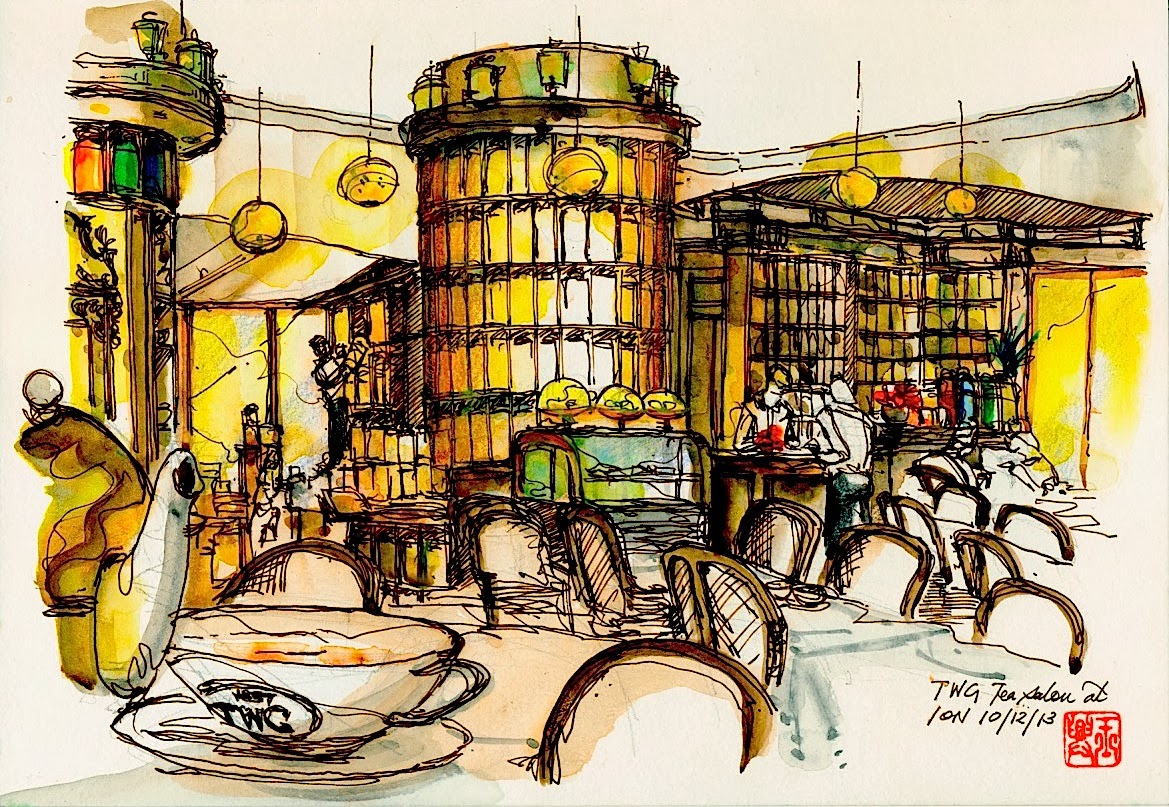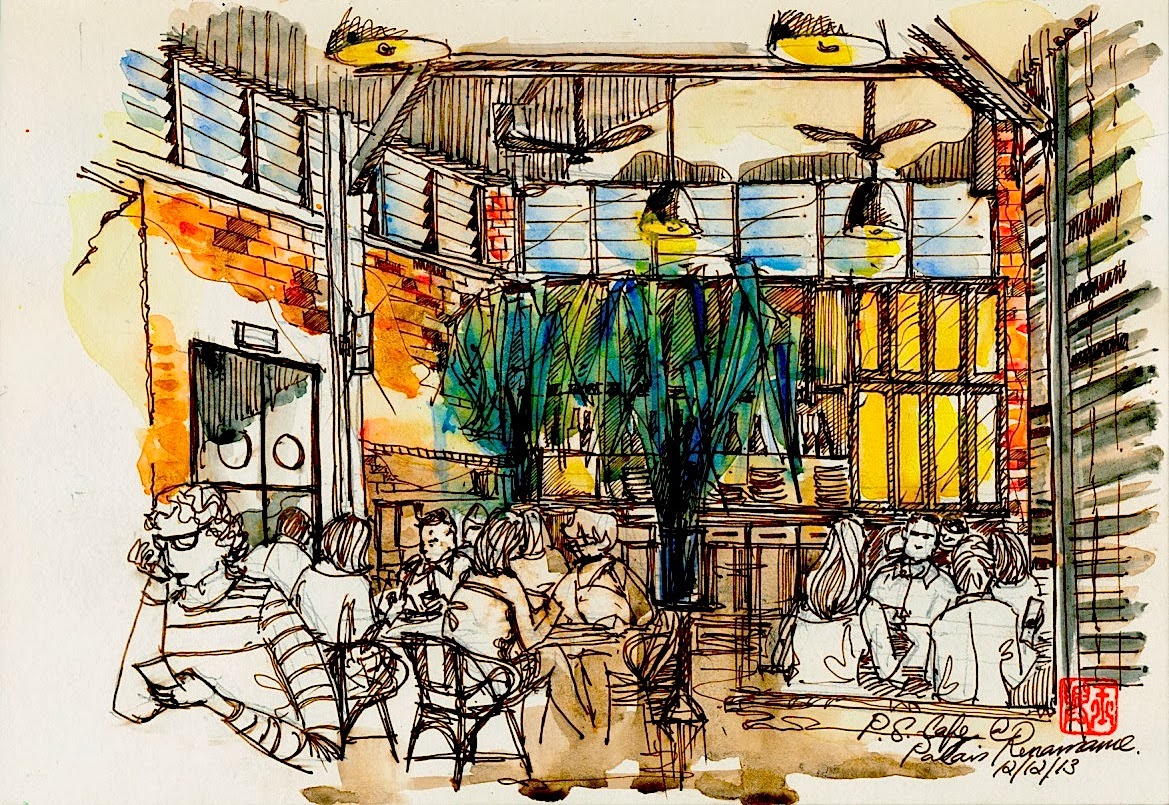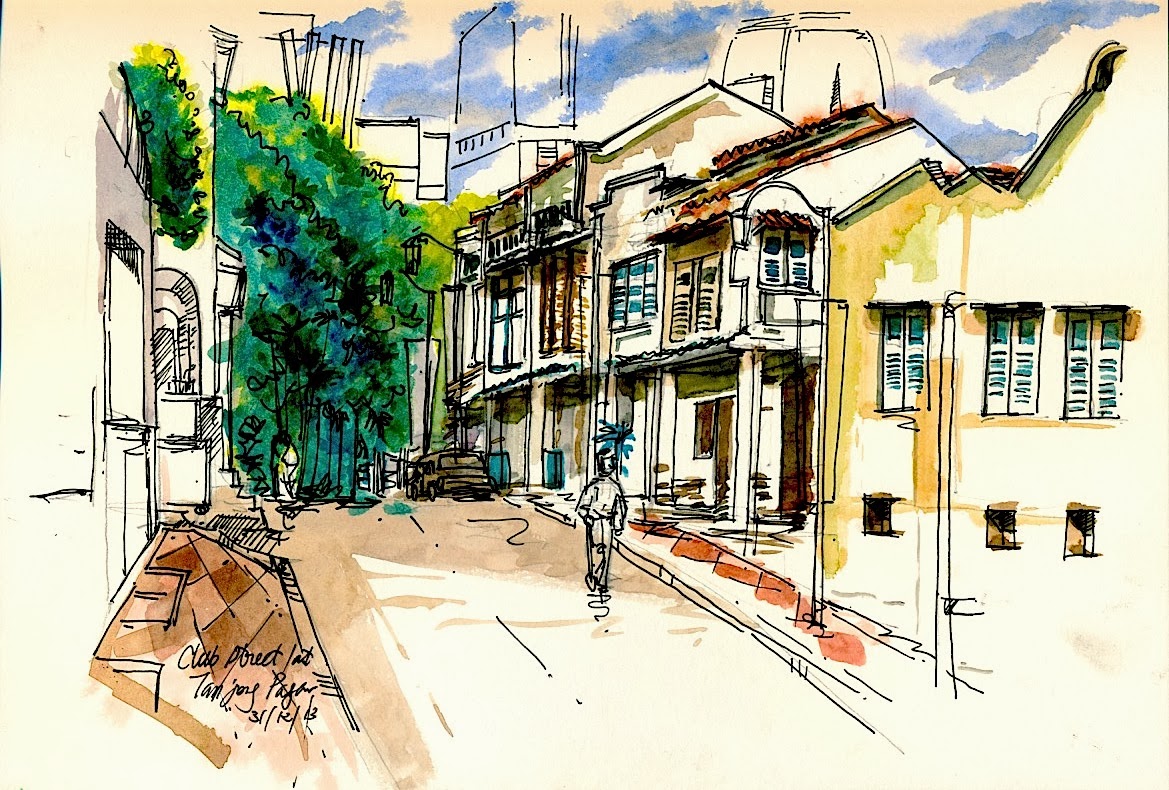 |
| King Albert Park (Complex) along Bukit Timah Road. Le Roi est mort! Vive le Roi! Holbein on Stillman and Birn Delta Hardbound |
When I first heard the news that King Albert Park complex was going
to be demolished, my first thought was, “Again? They’ve said for the umpteenth
time since I don’t know when…”
Then someone else mentioned that it’s real this time. The mall is going
away for some other development. Having some extra time because I got out from
work earlier the other day, I thought I’d record the building for posterity:
something to remember the place by.
The Meeting
I got acquainted with that place during my national service days (my
camp was in the vicinity). There were occasions when I’d visit the mall, my
camp buddies would order their junk and process foods while I just grabbed a
coke (I was never a fan of fast or processed foods). Inside the McD’s then,
when you look up the ceiling, you’d notice a model train sitting on rails that
span the ceiling. It had already stopped running then. Rumours were (from my
lecturer in college) that the train used to move and greet diners overhead
while they ate. I never saw it move.
The Second Time Around
When I started working and found my weekend interest in baking,
especially in experimenting with scones recipes. I discovered the Cold Storage
supermarket at that particular mall was about the only one that sold real
Devonshire cream (aka clotted cream) which is “accompaniment de rigueur” for
scones.
The End (but not quite...)
When my scone-obsession phased off to other recipes, so did my
visits to the mall. Being a working class person, it’s hard to sustain a
distant-relationship with an entity inconveniently located and within a
high-end, high ‘SES’ neighbourhood. So the ties unbound and the relationship
died a natural death.
The Rebound
I sat at a corner of the busy junction, at an island of pedestrian
crossing and traffic lights. The fast moving traffic and the sound of their
engines, the occasional military vehicles zooming past the place and relived
the memories, my memories of the place. And for that period of collected
moments while I was there, I was THERE, again.
--
P.S. I hope I did the place justice with this sketch... for my memories.
--
P.S. I hope I did the place justice with this sketch... for my memories.



























